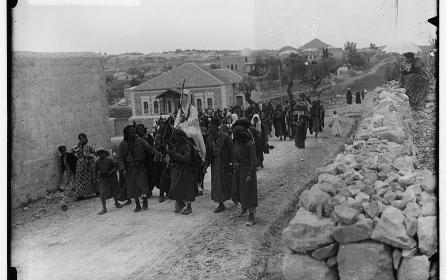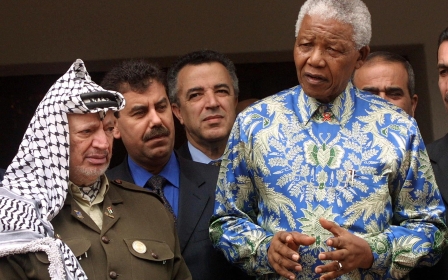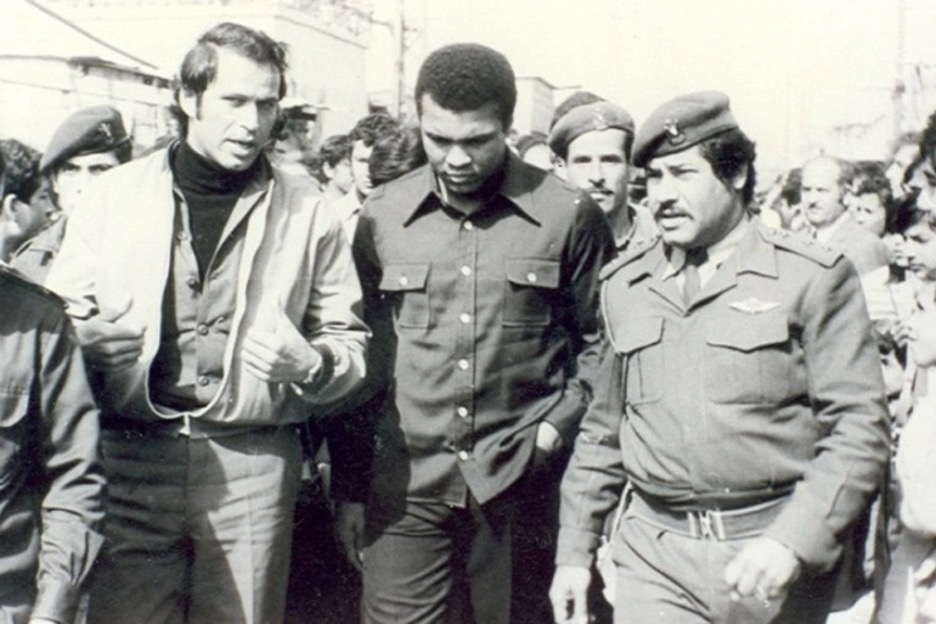
A visual history of Black-Palestinian solidarity
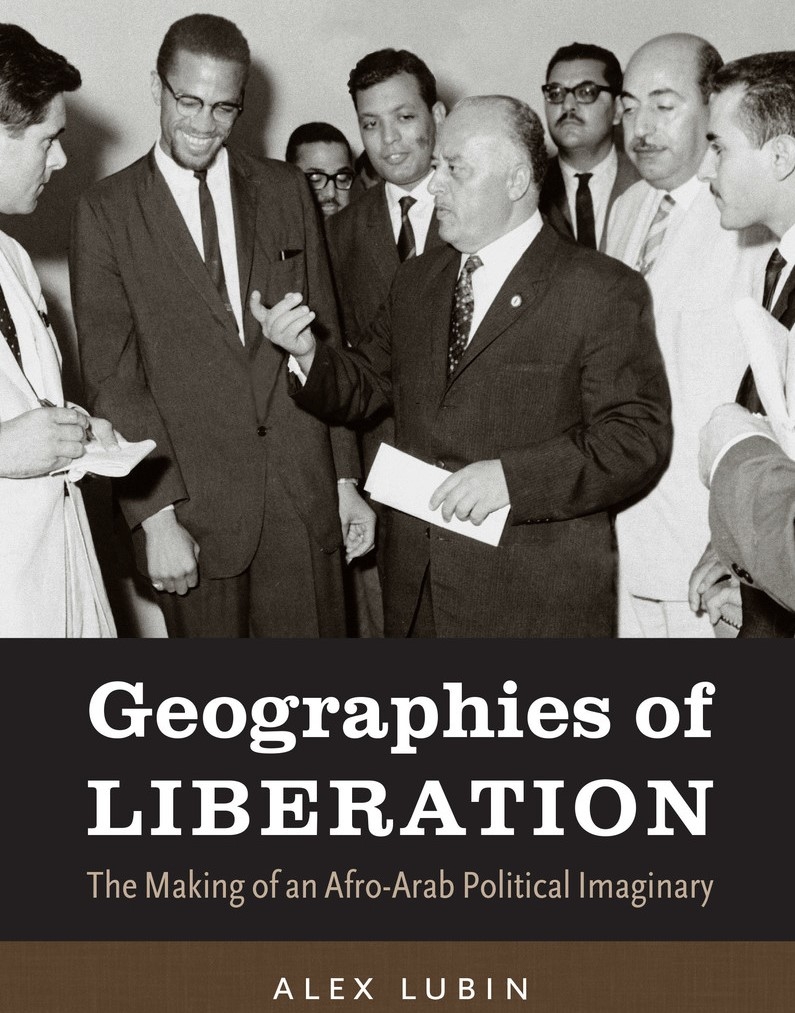
Black-Palestinian solidarity has been a notable component of the Black Lives Matter (BLM) movement that emerged in 2014. The intersection of Black and Palestinian activism is not a new phenomenon, of course, but rather a reemergence of a historic alliance rooted in the global fight against racism and imperialism.
In the picture above, Malcolm X is seen with leaders of the Palestine Liberation Organisation (PLO) in 1964. The image features on the cover of Alex Lubin’s book Geographies of Liberation: The Making of an Afro Arab Political Imaginary, which explores the intersections and influences of Black and Palestinian struggles. Lubin says that the relationship between these struggles is not limited by national and racial identities. (Photo: UNC Press)
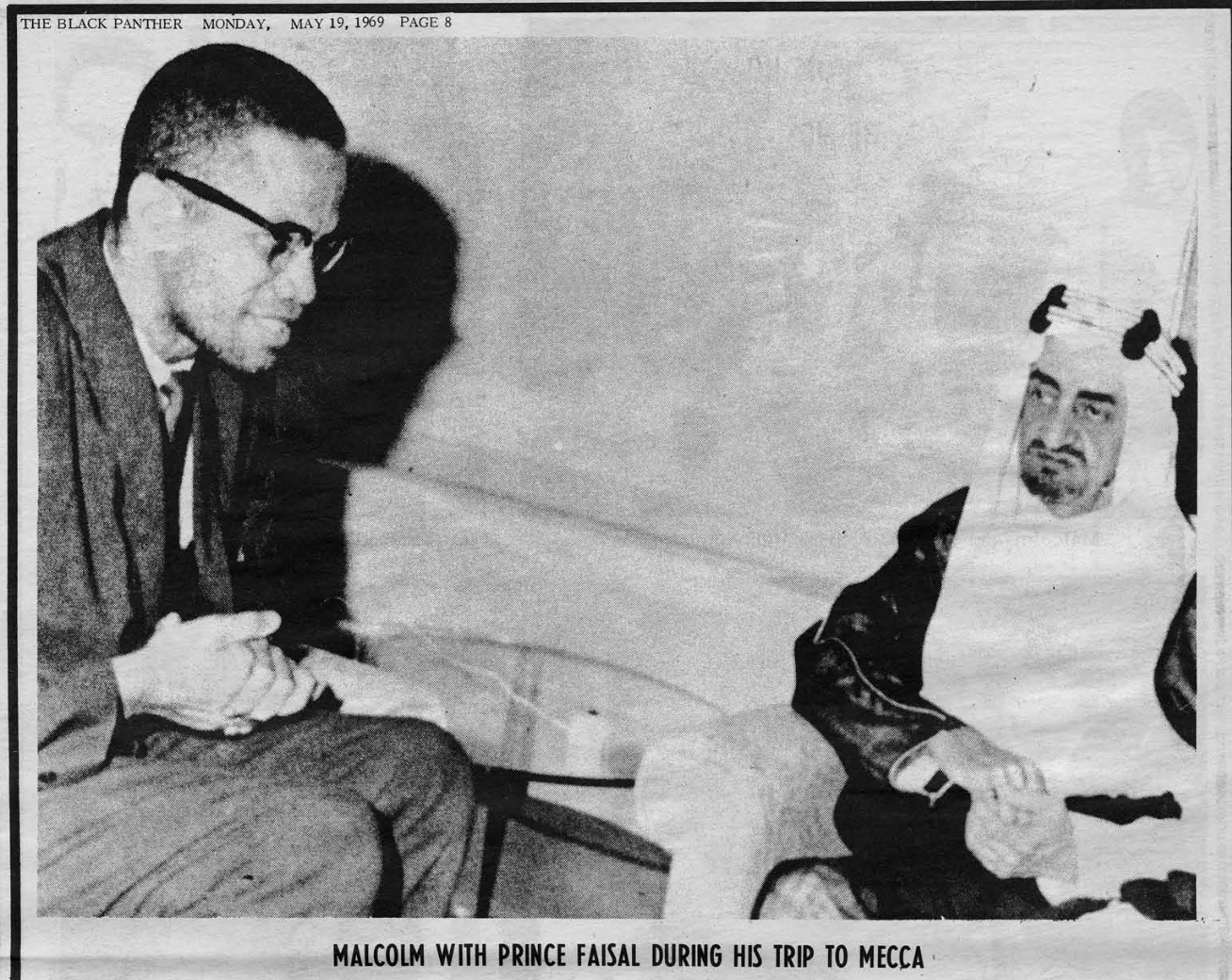
Malcolm X was one of the most important voices of the Black struggle in the US and became one of its most iconic revolutionaries. His trip to Saudi Arabia to complete a pilgrimage is well documented, but in addition to visiting Mecca, Malcolm X also travelled to Palestine on a number of occasions.
On his last trip to Palestine in 1964, the Black nationalist leader visited the Gaza Strip and was met by the Palestinian poet Harun Hashim Rashid. During his trip to the area, Malcolm X toured refugee camps, hospitals, and bore witness to the plight of Palestinians displaced by Israel. This encounter led to him writing a letter to the Egyptian Gazette entitled On Zionist Logic, in which he declares his staunch support for the Palestinian struggle and equates Zionism with colonialism, urging African leaders to support the Palestinian quest for freedom.
Through his advocacy, Malcolm X linked Black internationalism with the Palestinian cause, and this created a legacy of solidarity that would influence Black-Palestinian revolutionaries to come. (The Black Panther, 1969)
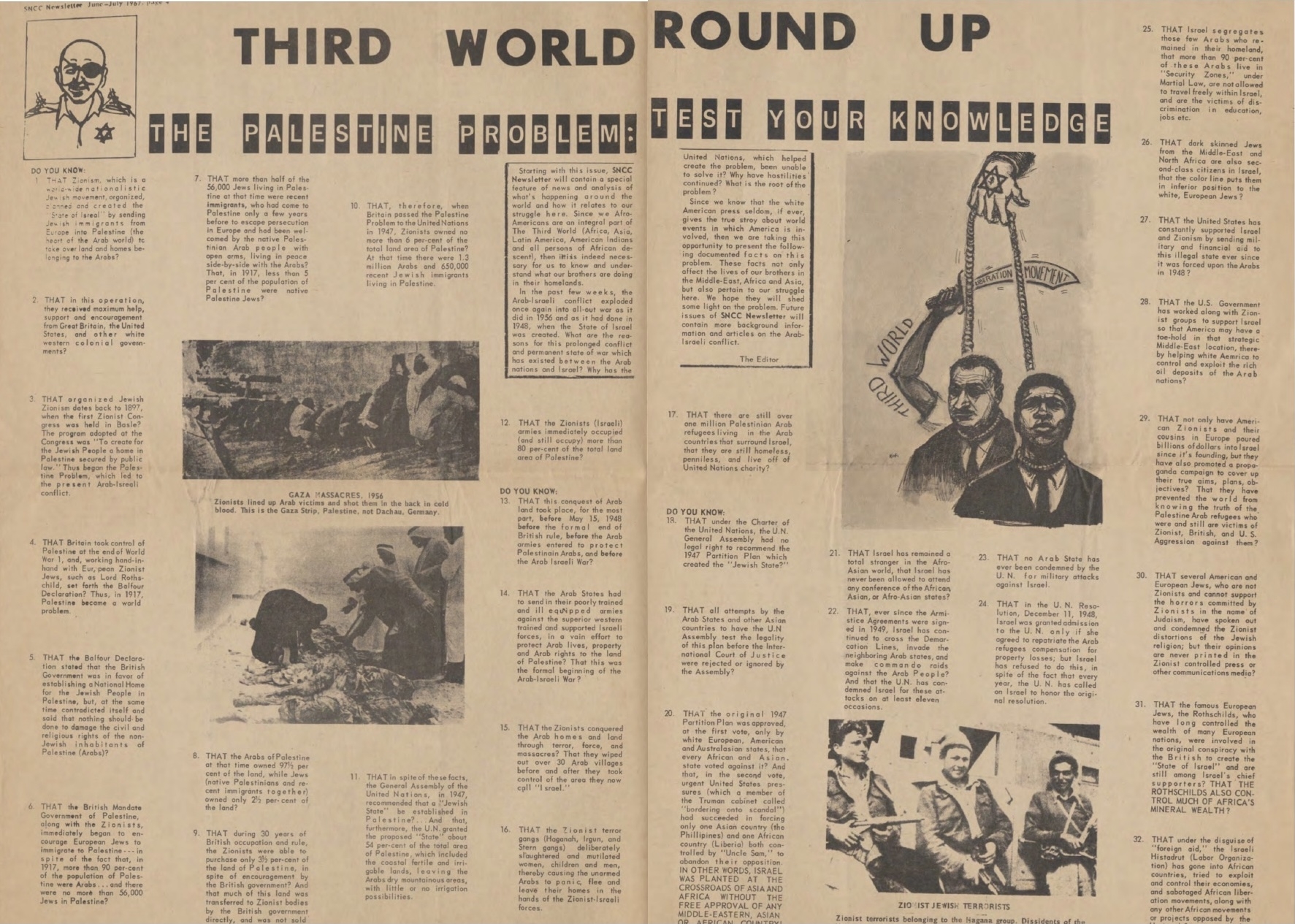
In 1967, the Student Non-Violent Coordinating Committee (SNCC) ran a newsletter entitled Third World Roundup: The Palestinian Problem: Test Your Knowledge, in which it listed 32 factual claims about the history of colonialism in Palestine and the impact of Israeli aggression against the Palestinians during the 1967 Arab-Israeli war.
Ethel Minor, who had worked with Malcolm X before his assassination in 1965, wrote the column for the SNCC and it became an influential piece that not only offered a counter perspective to the mainstream media narrative on Israel-Palestine, but served as a basis of shared struggle that linked Black activism in the US with Palestine. (SNCC archive)
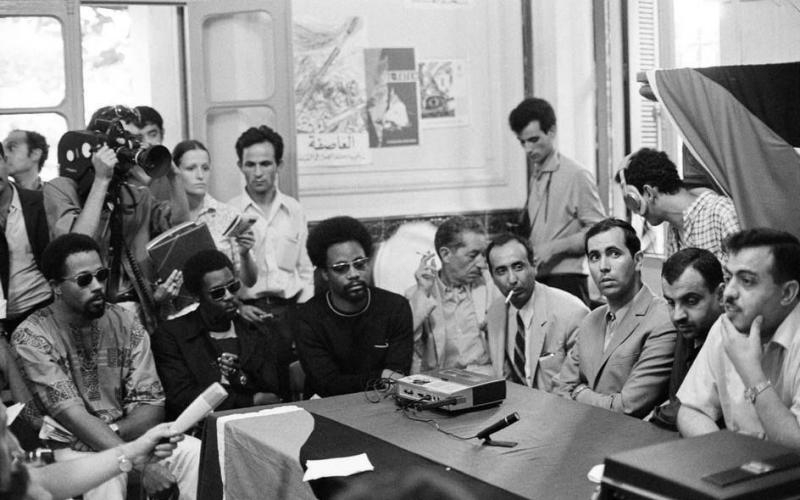
In 1969, Algeria hosted the first Pan-African Cultural Festival. The newly independent North African nation became a beacon of freedom for revolutionary struggle and Algiers was dubbed the capital of the Third World.
The Pan-African Cultural Festival was attended by hundreds of delegates from 31 independent African countries, as well as representatives from various African liberation movements. Amongst them were the Palestinians, who were also invited to attend the event in the spirit of anti-imperial solidarity. The festival was essential in forging the struggles of Africa and Palestine into a united movement against imperialism globally.
One of the most famous images from the event is a photograph of Eldridge Cleaver and members of the Black Panther Party with members of the PLO in their main office in Algeria. During the festival, Cleaver spent a lot of time with the PLO delegates and was quoted by the New York Times as saying: “We recognise the Jewish people have suffered, but this suffering should not be used to justify suffering by Arabs now." (The quote appears in Elaine Mokhtefi's Algiers, Third World Capital and the image is credited to the Pan-African Cultural Festival)
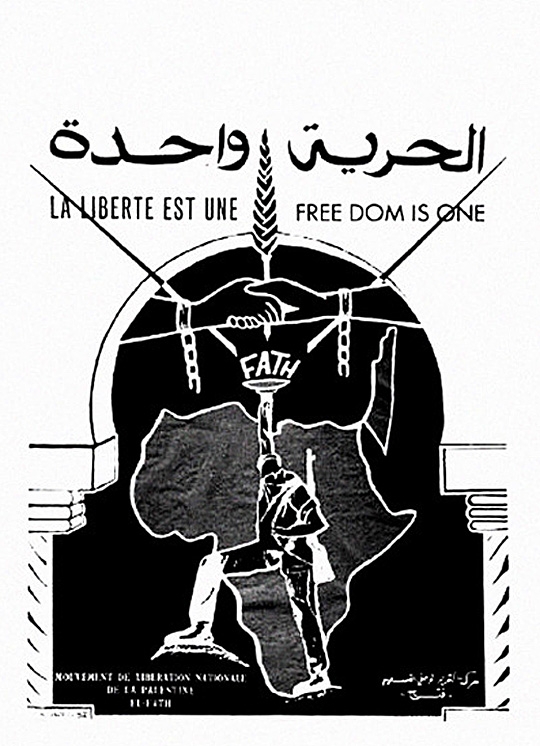
This poster lauding the Fatah movement and Afro-Palestinian unity was made in Arabic, French and English by the French photographer Guy Le Querrec and is part of a series promoting the Pan-African Cultural festival. (Guy Le Querrec)
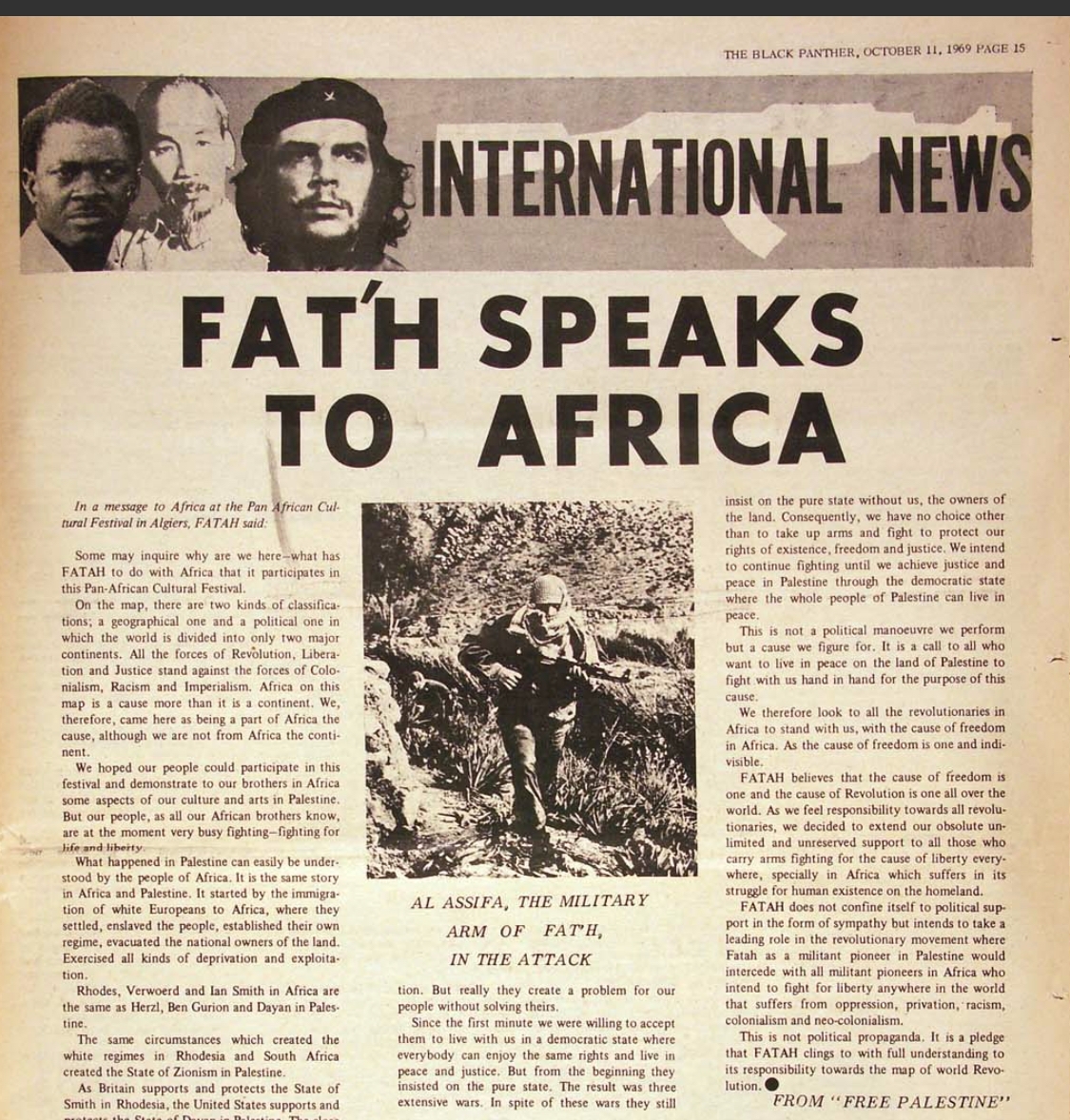
In 1969, the Black Panther Newsletter published the speech given by the PLO delegation during the Pan-African Cultural Festival. The PLO proclaimed boldly that Africa was not merely a continent but a cause, passionately arguing that Africa is the centre for all the forces of the world who stood against colonialism, racism, and imperialism. Addressing the crowd, the PLO stated that although they as Palestinians were not from Africa, their struggles and quest for freedom made them belong to the African cause. (The Black Panther)
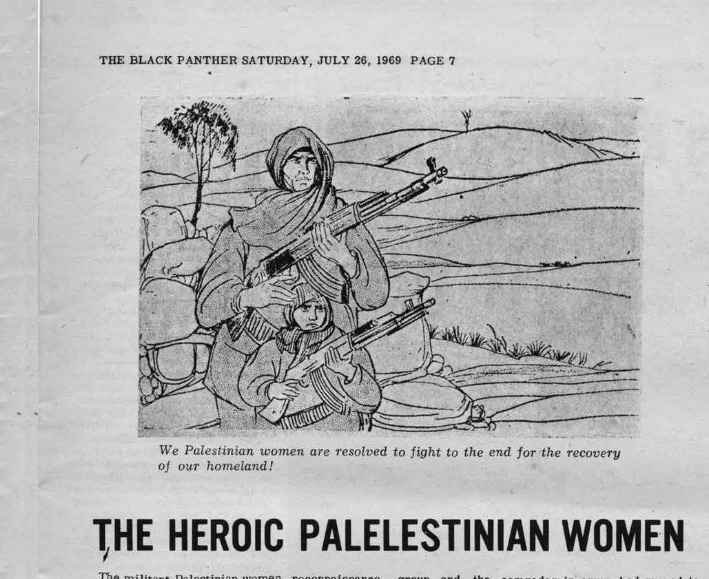
Black-Palestinian solidarity continued to develop throughout the 70s and 80s and was well documented through the Black Panther Intercommunal News Service. From 1969 to 1980, the newsletter would serve as a platform for the Palestinians and regularly documented the situation in Palestine. In this feature, the Black Panther Party pays homage to the "heroic Palestinian women" for their contributions to their revolutionary struggle. (The Black Panther, 1977)

The Black Panther Intercommunal News Service would run very extensive reports on the situation in Palestine. The feature above published in 1977 discusses the repression Palestinians face in the West Bank. The BPP's reports on Palestine shed light on the Palestinian plight and also connected the Palestinian struggle to the Black struggle for freedom in the USA. (The Black Panther, 1977)
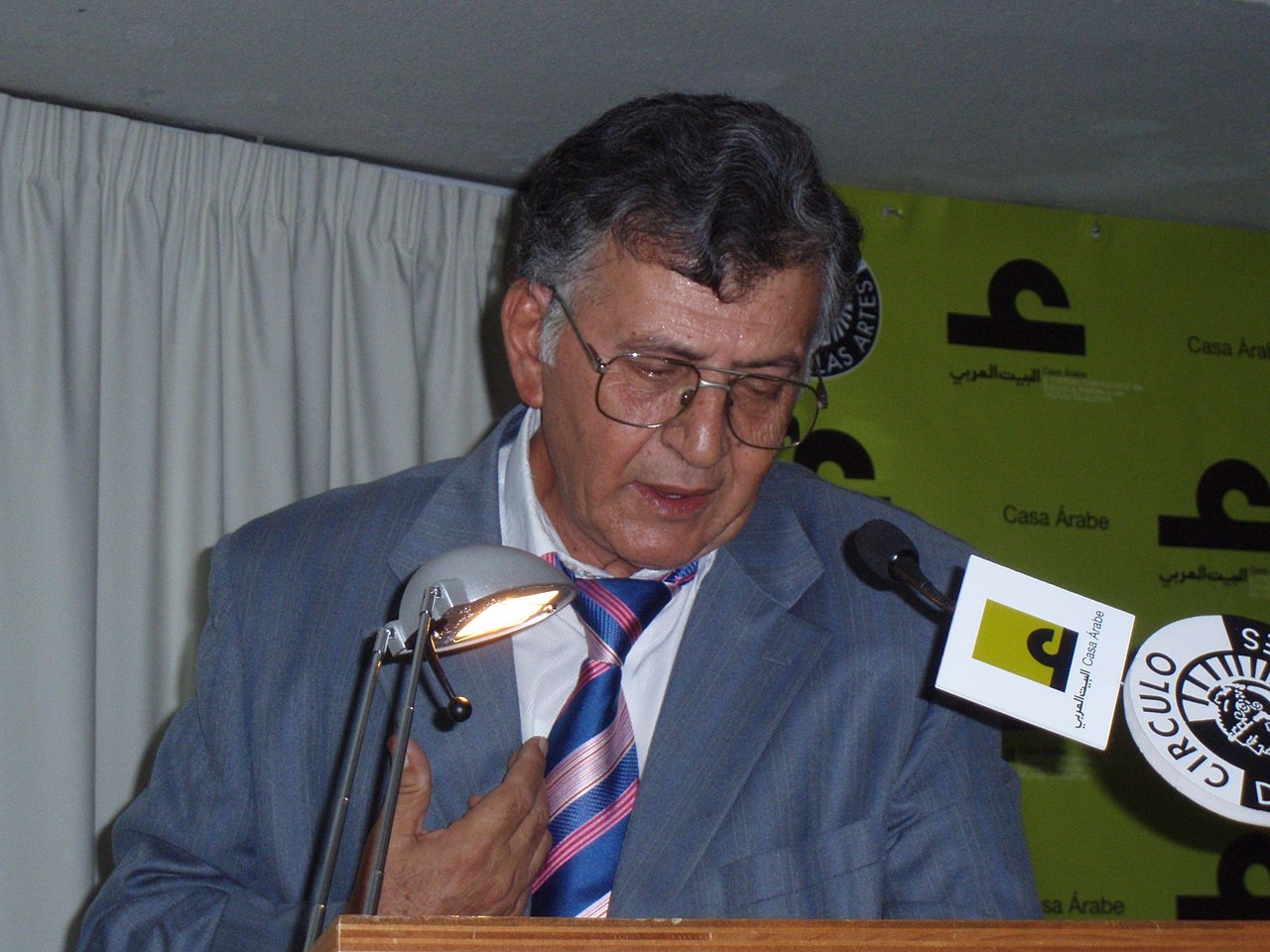
Palestinian and African revolutionaries connected through many different mediums from the 60s onwards. Literature and poetry dated to that period illustrate strong sentiments of solidarity.
One important figure is Samih al-Qasim (pictured above in 2007), a renowned Palestinian poet and revolutionary. His activism landed him in Israeli captivity on a number of occasions, and many of his works were written while in prison. His poetry is imbued with nationalist undertones and anti-imperial messages, and is vocal on the issue of solidarity with others struggling against imperialism. In his poem Patrice Lumumba, Qasim speaks to the tragedy of the Congolese leader, a staunch anti-imperial force assassinated with the help of the CIA. For Qasim, Lumumba is the "eagle of Africa".
The Palestinian also penned The Unknown Continent, which signifies solidarity with African Americans combatting systemic racism in the United States. The poet was popular among fellow revolutionaries and a copy of Qasim’s poetry was found in the jail cell library of renowned Black Panther leader, George Jackson. (Creative Commons)
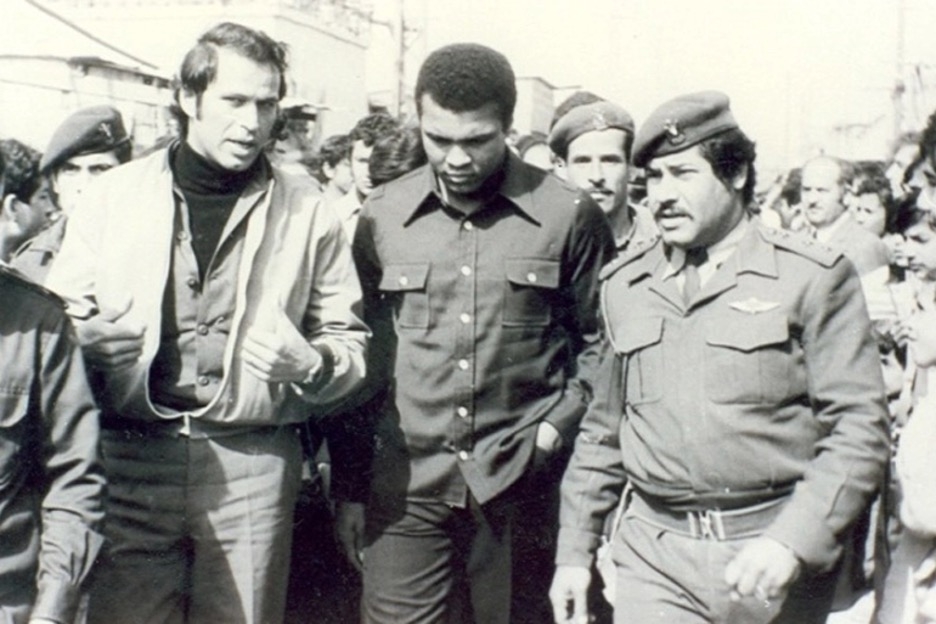
The world’s greatest boxer and champion of the Black struggle, Muhammad Ali also extended a hand of solidarity towards Palestinians. Pictured here in 1974, Ali visited a Palestinian refugee camp in southern Lebanon. The boxer, who converted to Islam in 1964, was an outspoken critic of US imperialism and expressed strong solidarity with the Palestinian people and their pursuit of liberation. (Creative Commons)
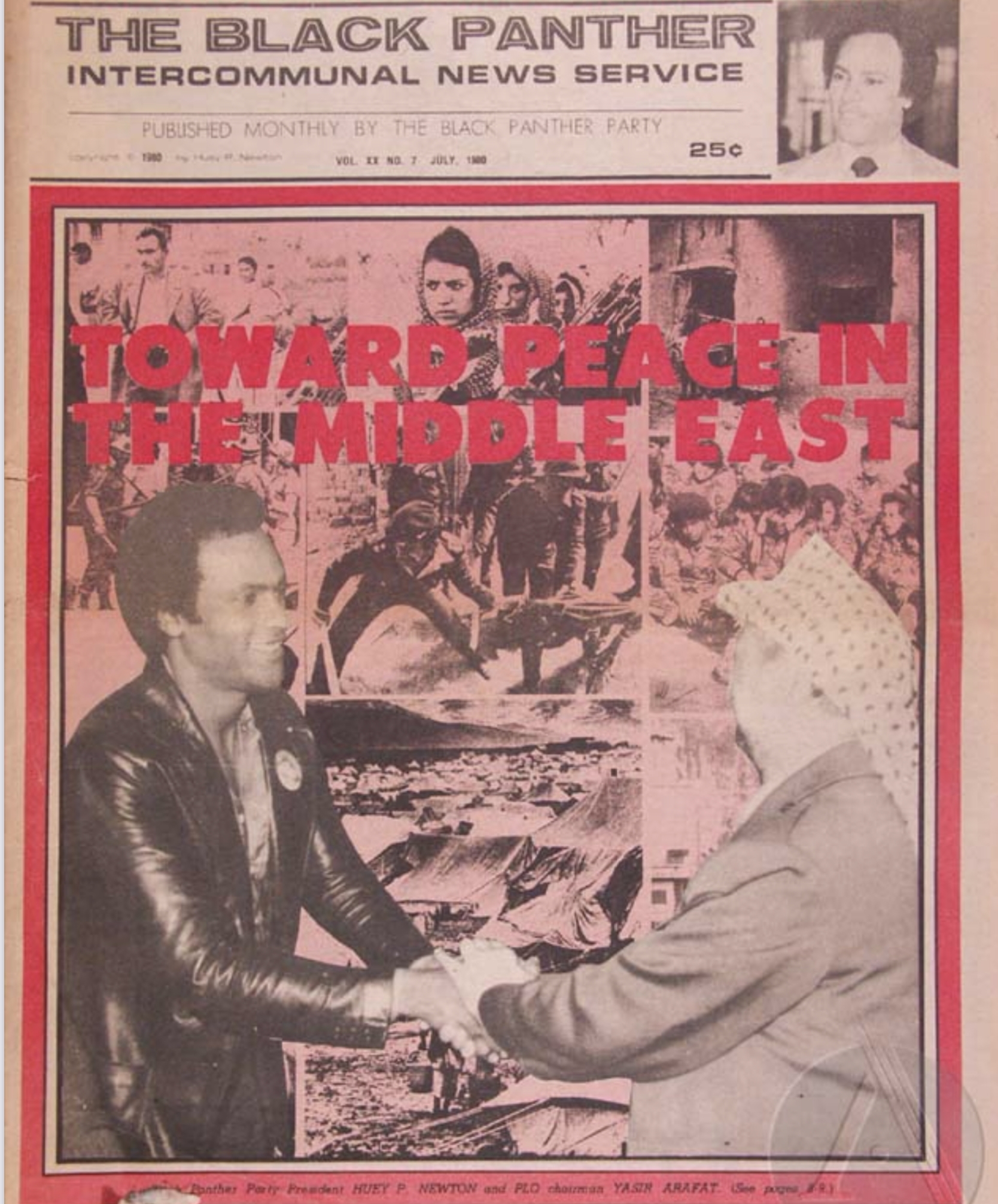
The Black Panther Newsletter published the photo above on the cover of its July 1980 issue. It shows Black Panther co-founder Huey P Newton meeting Yasser Arafat, chairman of the PLO, in Lebanon that year. The BPP and the PLO had established contact and solidarity networks since 1969. (The Black Panther, 1980)

In 2016, the South African city of Johannesburg donated a 20-foot statue of Nelson Mandela to the occupied Palestinian city of Ramallah. The first president of post-apartheid South Africa was also one of the loudest advocates of Palestinian liberation in international politics. This poster designed by the Palestinian artist Hafez Omar in 2016, represents Mandela’s revered status amongst Palestinians and his statue serves as a symbol of African and Palestinian solidarity. (Hafez Omar)
This article is available in French on Middle East Eye French edition.
Middle East Eye delivers independent and unrivalled coverage and analysis of the Middle East, North Africa and beyond. To learn more about republishing this content and the associated fees, please fill out this form. More about MEE can be found here.


